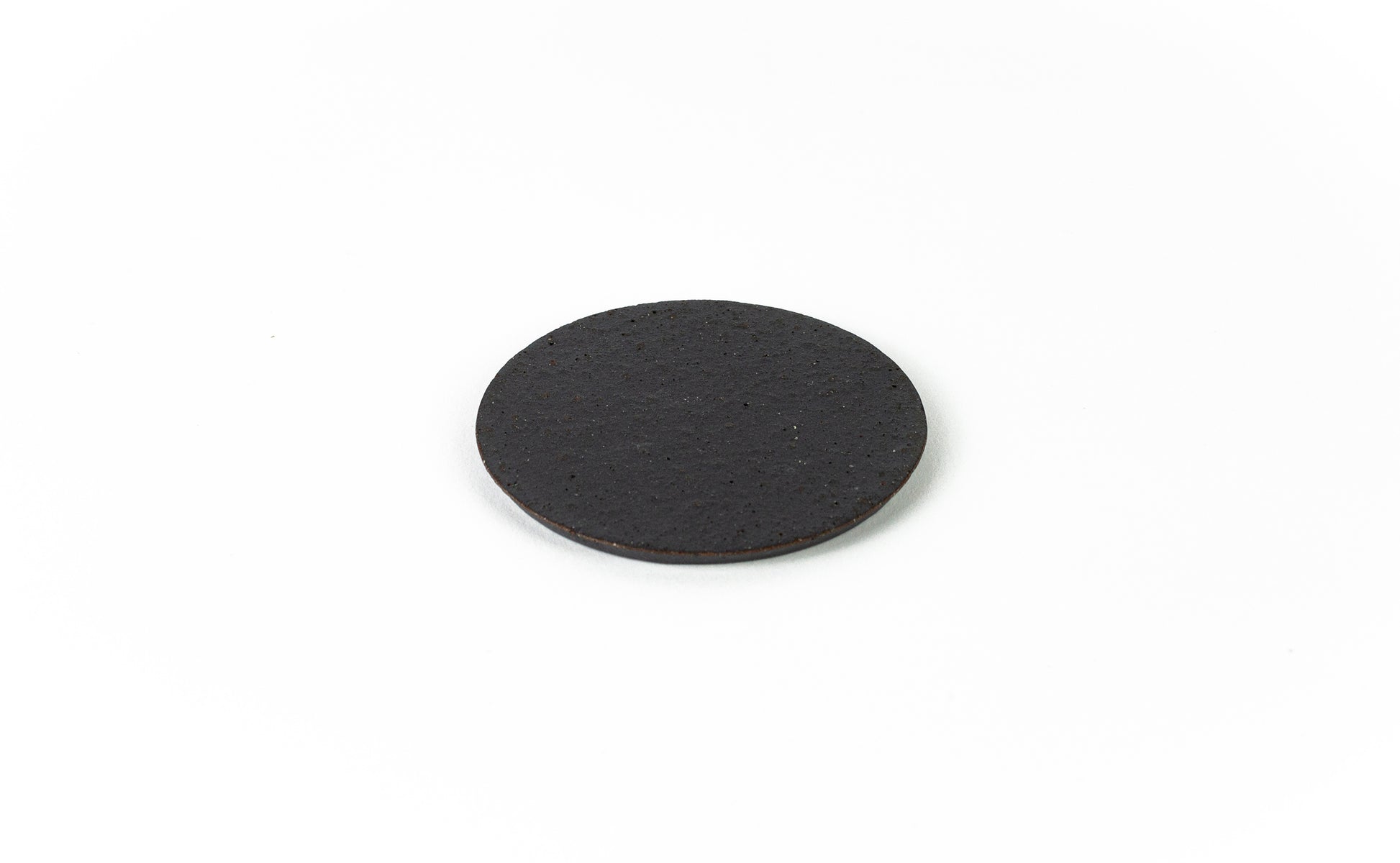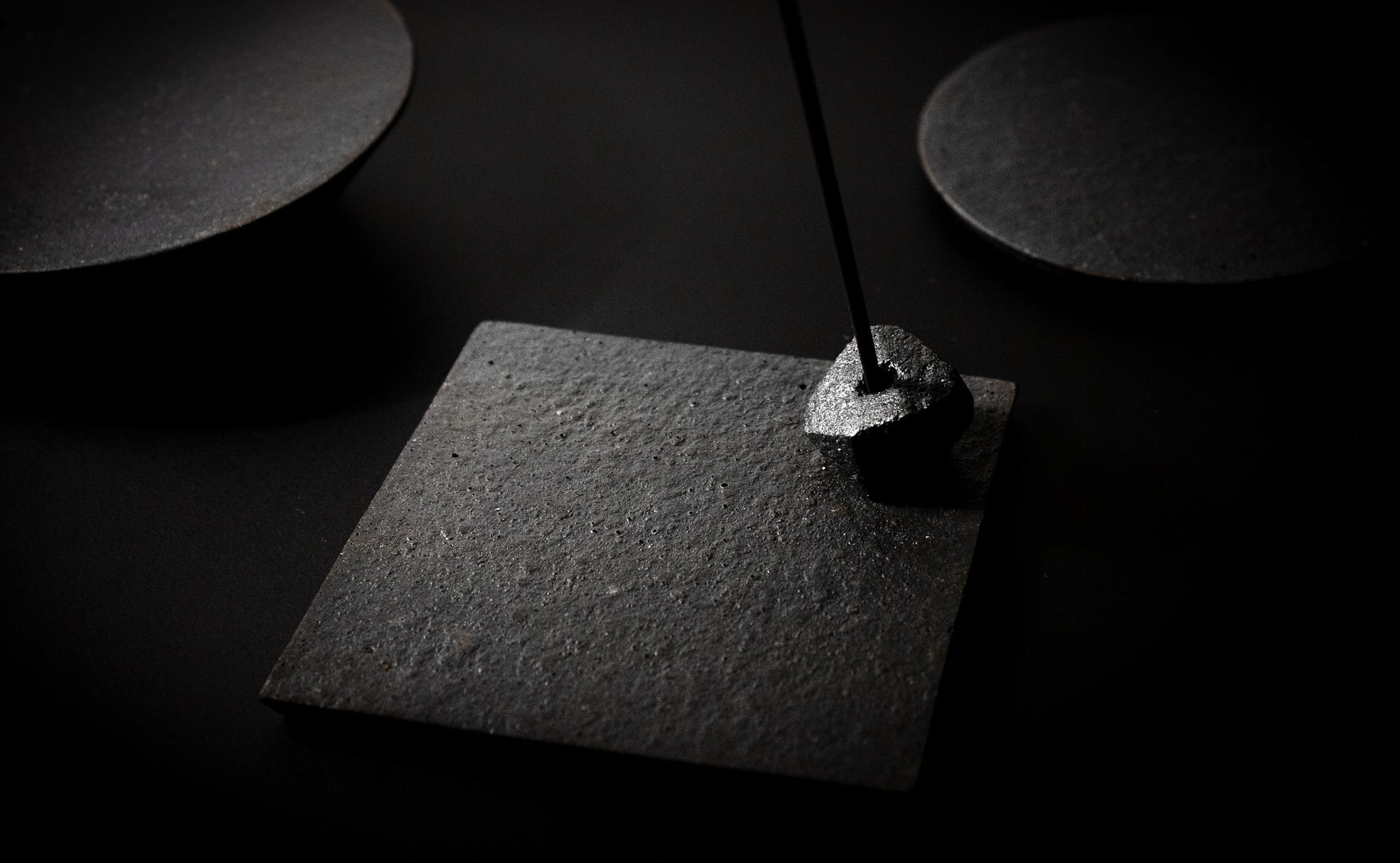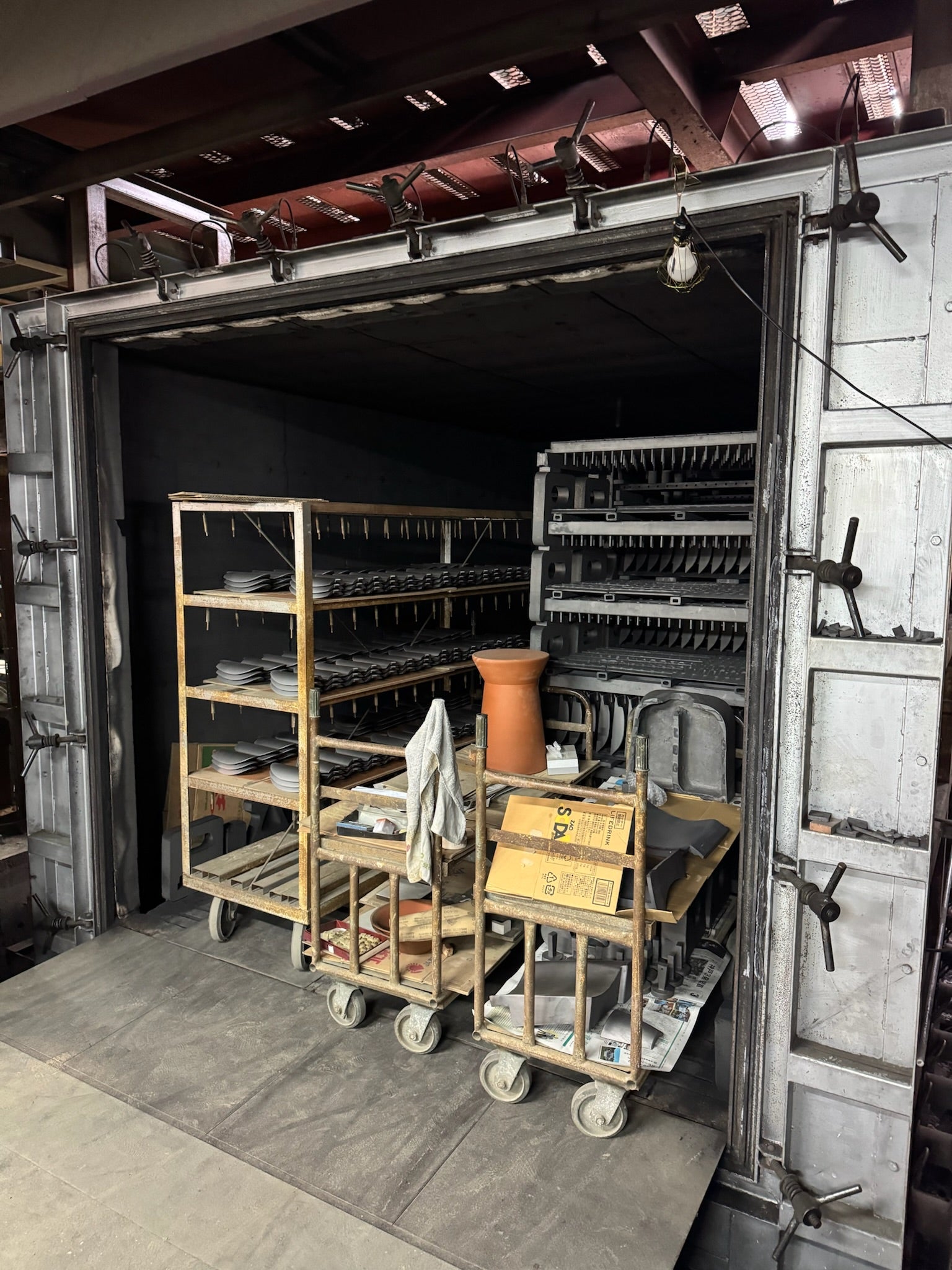KENKAWAI
Kawara Ceramic - Incense Holder 2 piece round / 8cm
Kawara Ceramic - Incense Holder 2 piece round / 8cm
Couldn't load pickup availability
A Simple Reflection of Wabi-Sabi and Zen Philosophy
This minimalist two-piece incense holder set is crafted by a fourth-generation ceramic artist from Awaji, renowned for its traditional Kawara tile production. The set features a square or round plate and a hexagonal wabi-sabi stone, both unglazed and made from ibushi-gawara clay. The stone can be freely placed on the plate, allowing for a personalized arrangement that embodies the Zen garden philosophy of balance and simplicity.
Both the plate and the stone undergo the ibushi firing technique, giving them a natural, dark gray finish with a subtle metallic sheen. This process not only highlights the raw beauty of the clay but also enhances durability and resistance.
Material: High-quality ibushi-gawara clay, sourced and made in Awaji
Dimensions: plate: 8cm diameter; Hexagonal stone: approx. 2 x 2cm
Color: Natural dark gray/black with metallic sheen
Unglazed: Showcases the pure, natural texture of the clay
Handcrafted in Japan: A reflection of the skill of Kawara artisans
Non-EU deliveries: Please note that additional VAT, customs duties, or local taxes may apply upon import.






Kawara Tile Ceramics
-
Handmade
Our kawara ceramics are meticulously handcrafted by a skilled ceramic artist from a fourth-generation family business on Awaji. This region is celebrated for its rich tradition of kawara tile production, where artisans have perfected their craft over centuries, bringing you pieces that reflect the beauty of Japanese aesthetics.
-
Ibushi Firing
The ibushi firing technique results in a stunning metallic sheen that highlights the natural clay's texture. The unglazed surfaces of these ceramics not only enhance their visual appeal but also signify durability and resilience. This traditional method adds depth and character, ensuring that each item is as functional as it is artistic.
-
Heritage
The artistry of Ibushi-gawara ceramics is deeply rooted in the historical production of tiles for Japan’s temples and shrines: often part of complex architectural elements, designed to reflect the spiritual significance of the structures they adorned.










